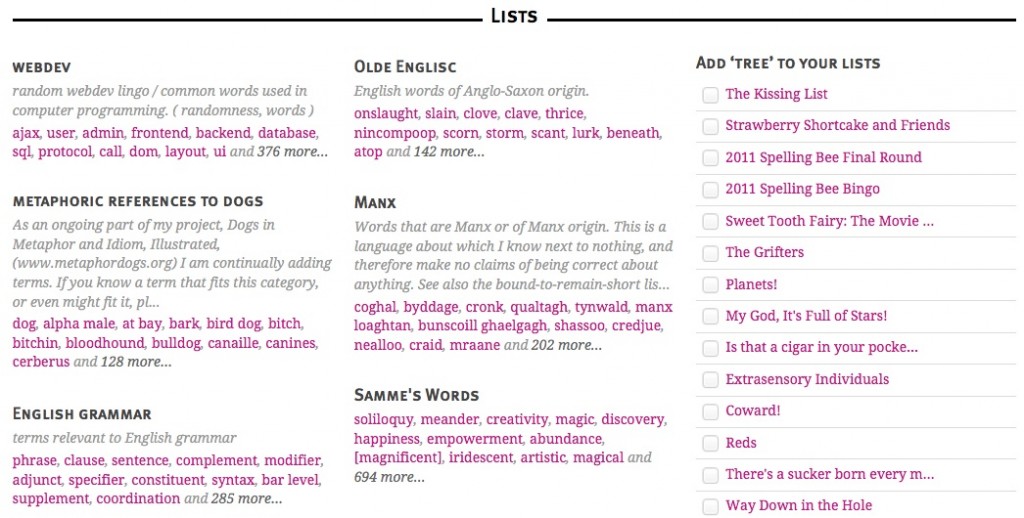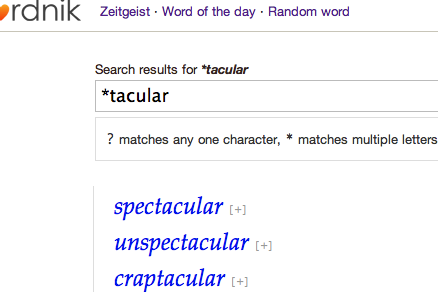As you may know, every day, along with our Word of the Day, we tweet a List of the Day, or LOTD. Sometimes we pick lists based on a theme, like words from Scottish culture for Scots Week, and words from Star Trek for Science Fiction Week. Other times we picks lists just because we like them, like this one on coin collecting terms or this one on smelly synonyms (and who could resist the title, Stink Different?).
Now it’s your turn. For the month of February, nominate your favorite list to be a List of the Day. This can be your own list or someone else’s. You can also nominate as many lists as you want. If we pick your list, you’ll get a Wordnik T-shirt.
Here’s what we need from you:
- The link to your list
- Your Wordnik username
- Your T-shirt size (Men’s S, M, L, XL, 2 XL) (Women’s S, M, L)
You can put the info in the comments of this post or email it to wordnik@feedback.com with the subject line, “List of the Day nominee.”
Have yet to make a list? First you’ll want to signup for a user account (don’t worry, it’s free), after which just click on your user name in the top right hand corner. From the drop down menu, click New List. Then start adding away!
Here’s even more info on lists, a whole bunch of lists at once, and the Community page which has the newest lists.
We look forward to seeing your nominations!









